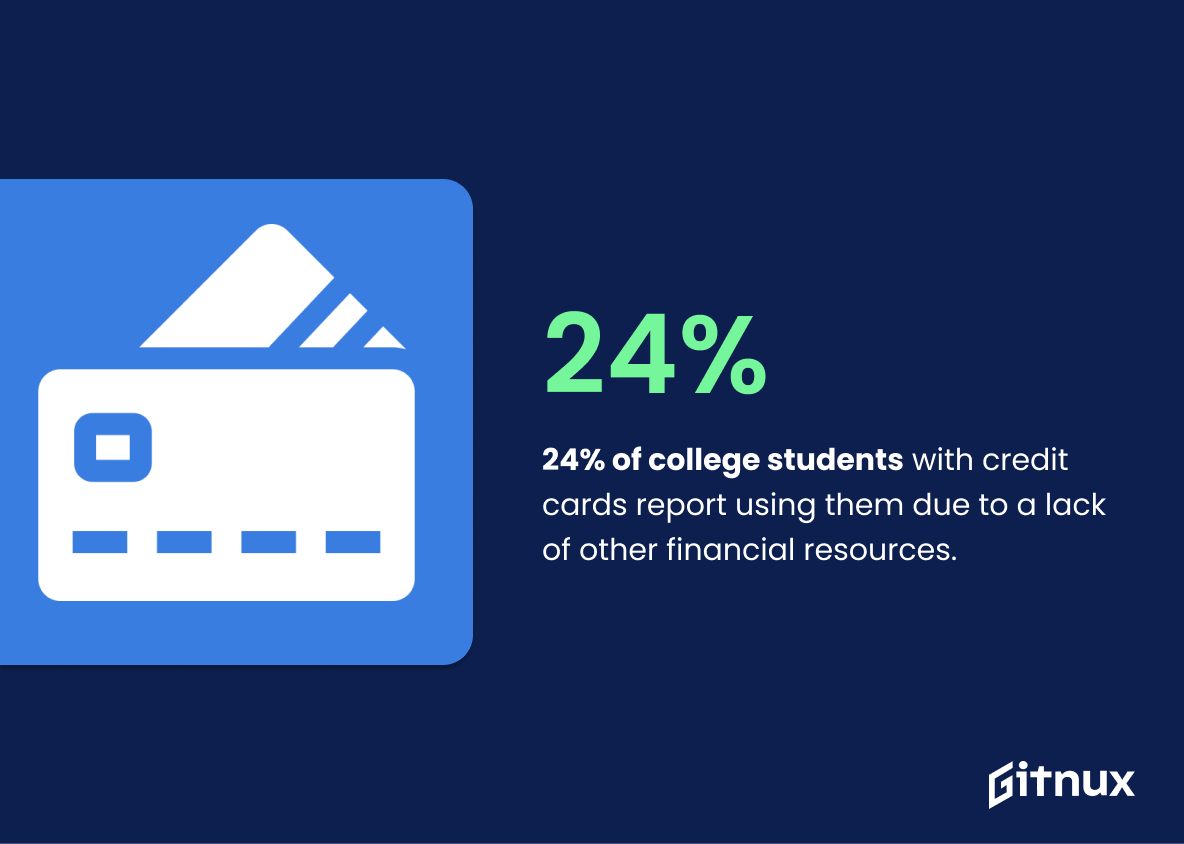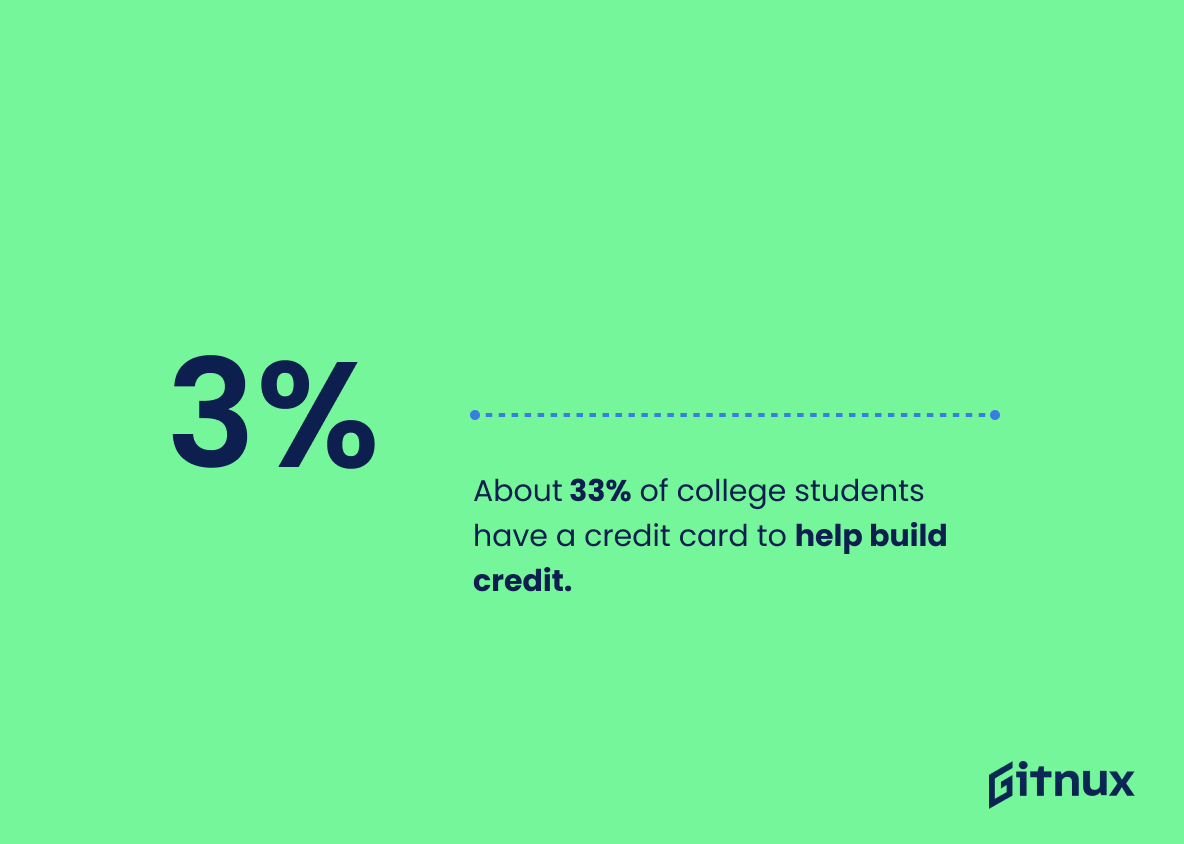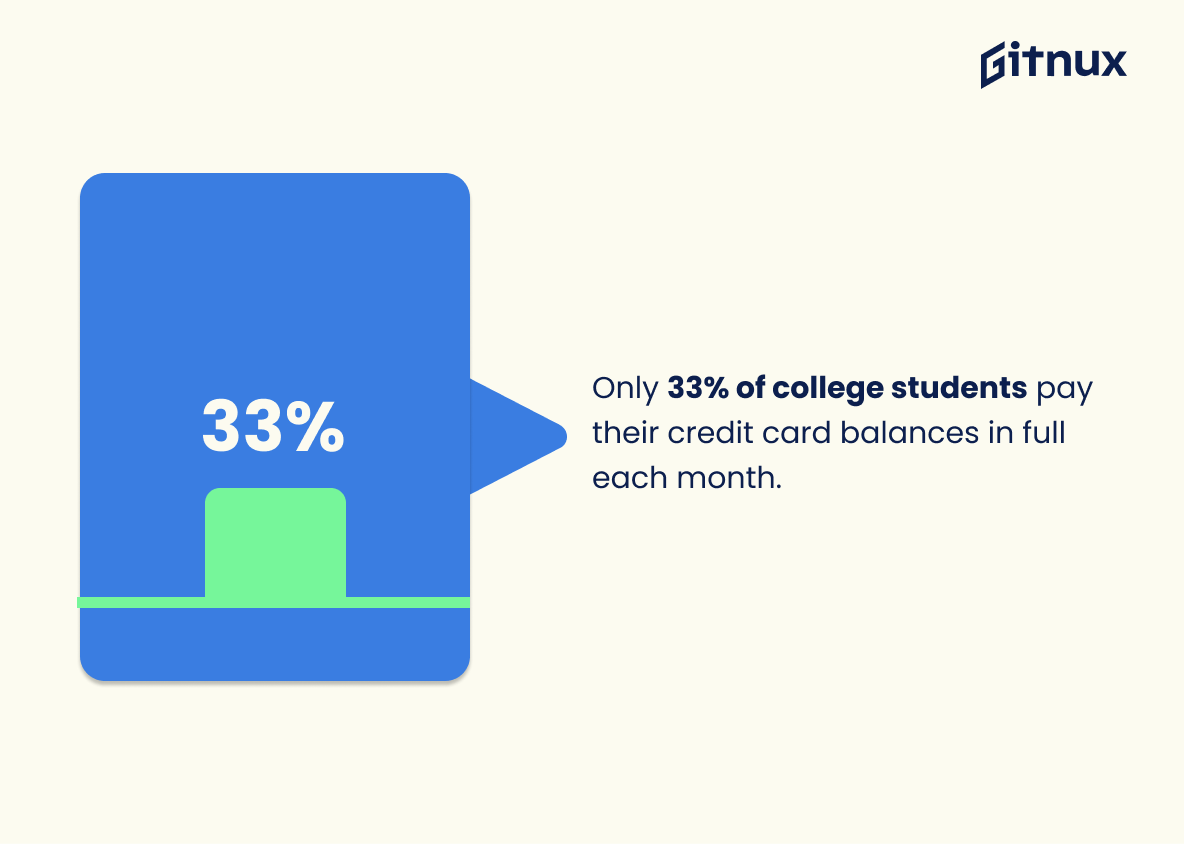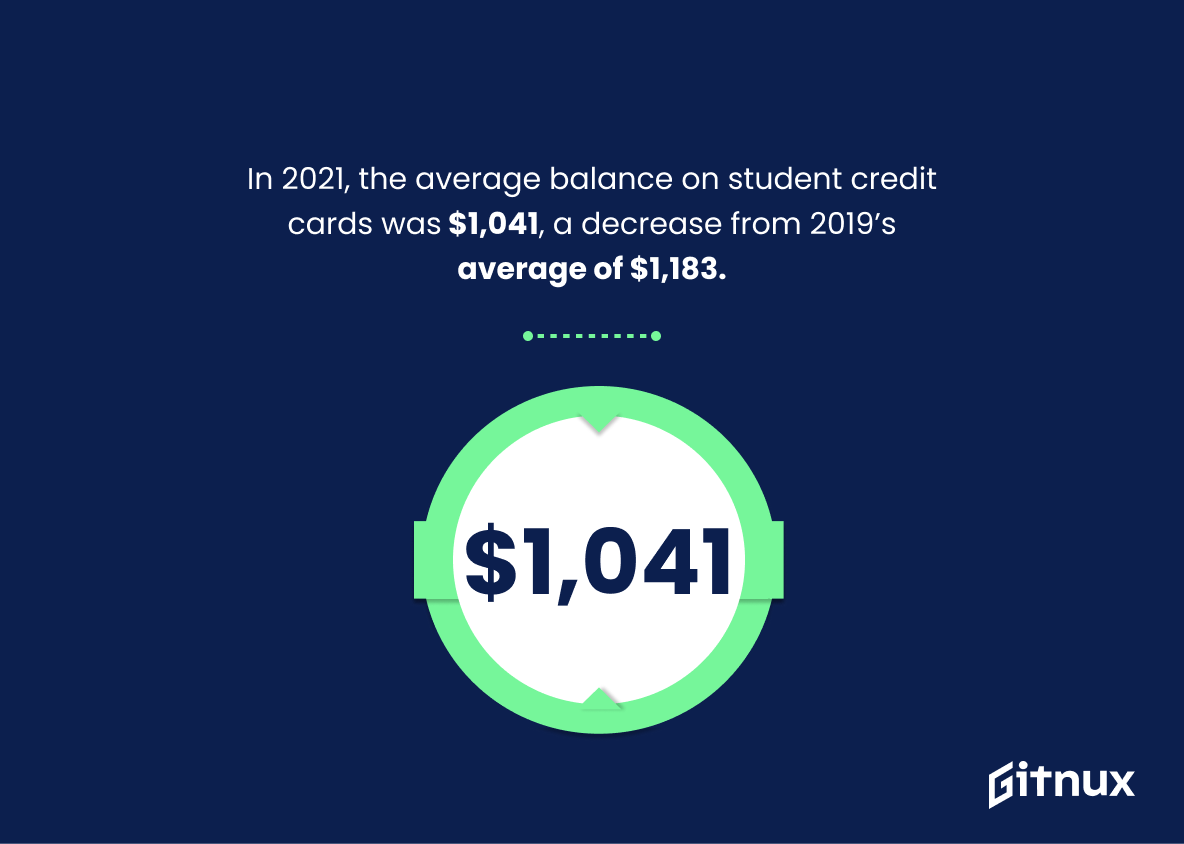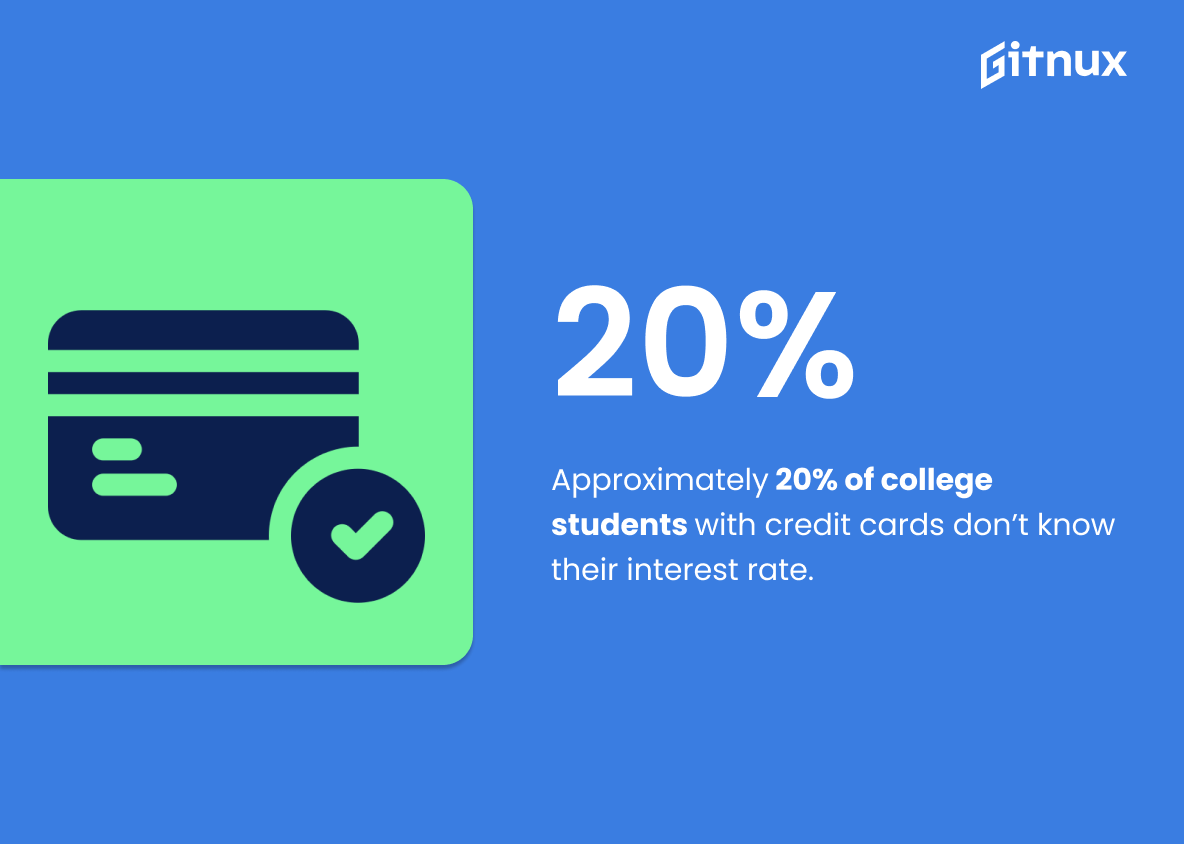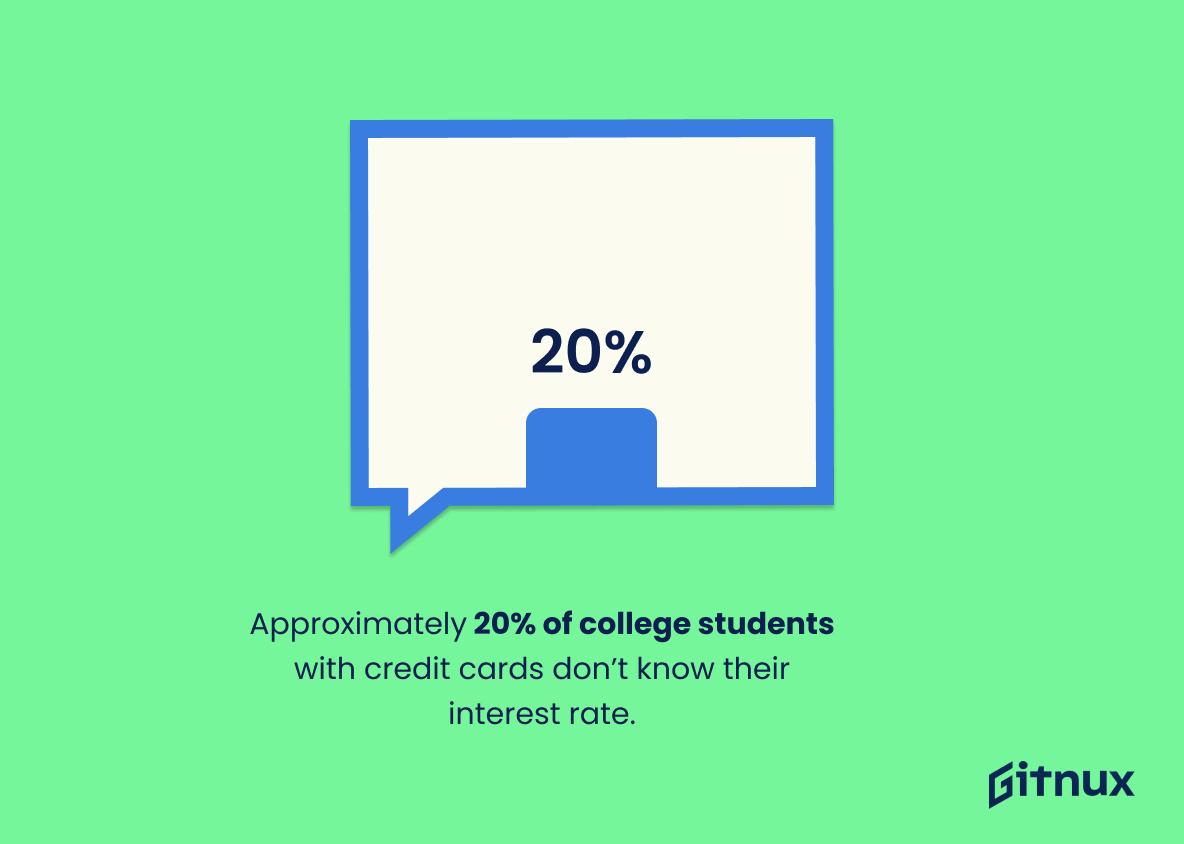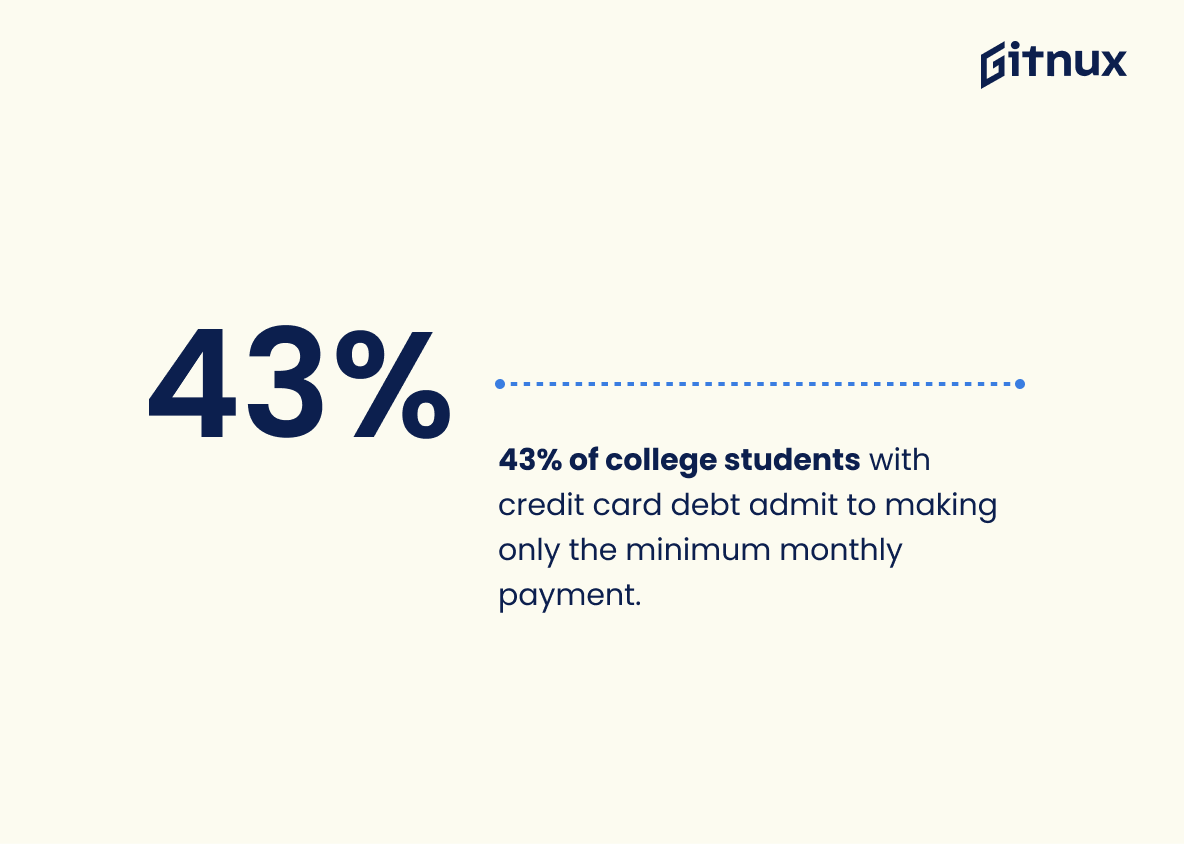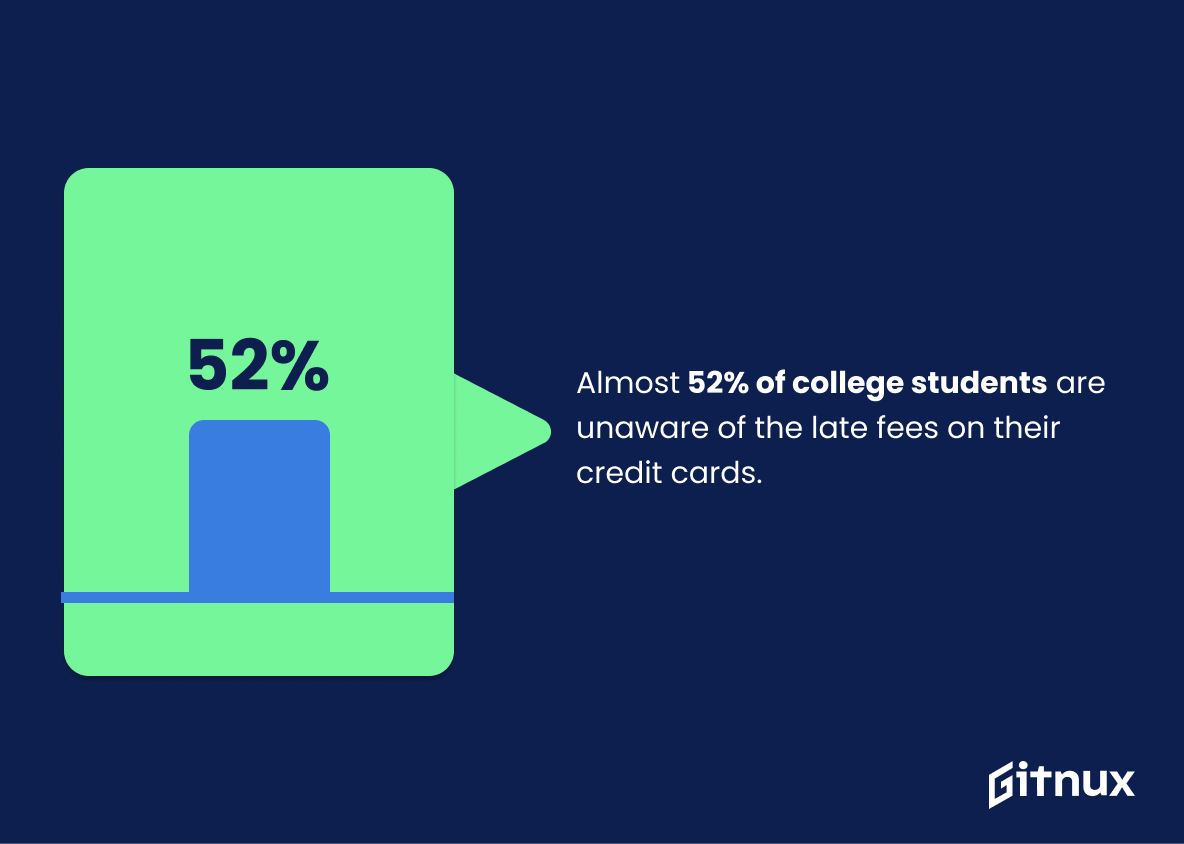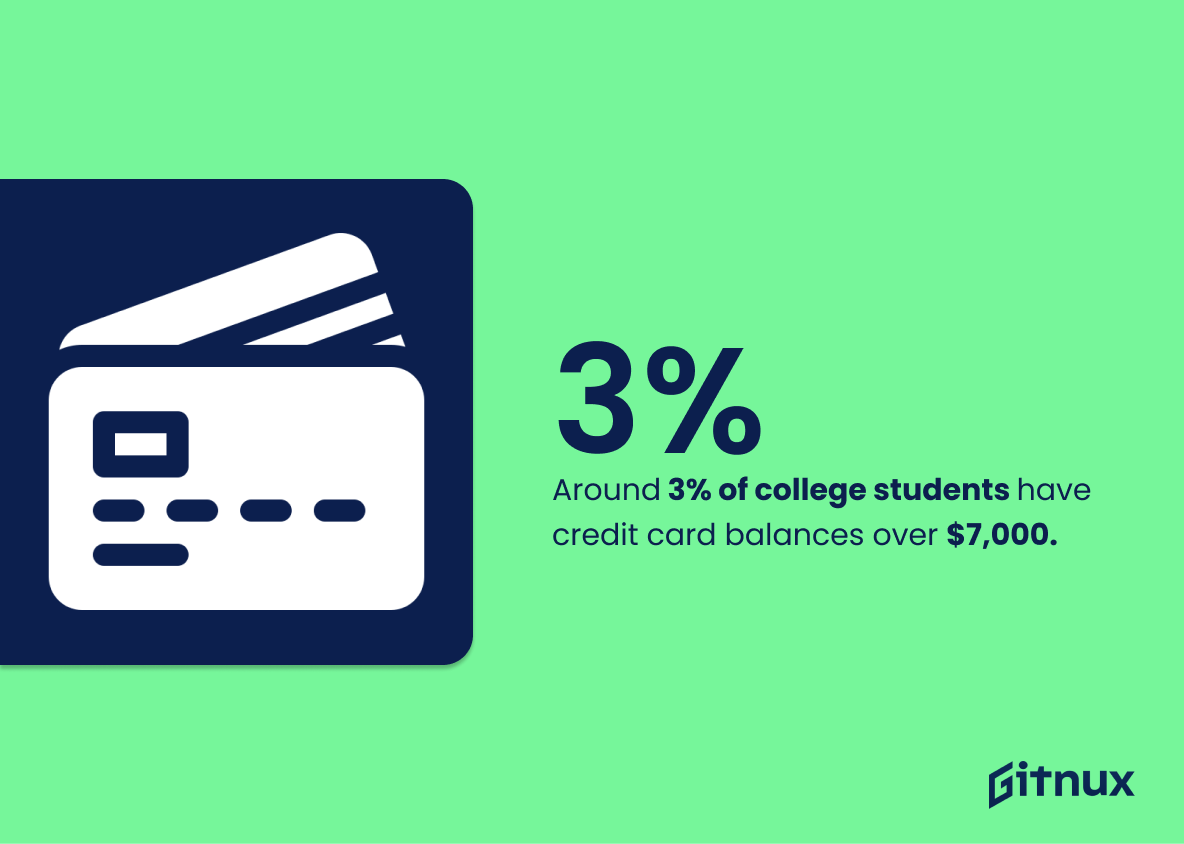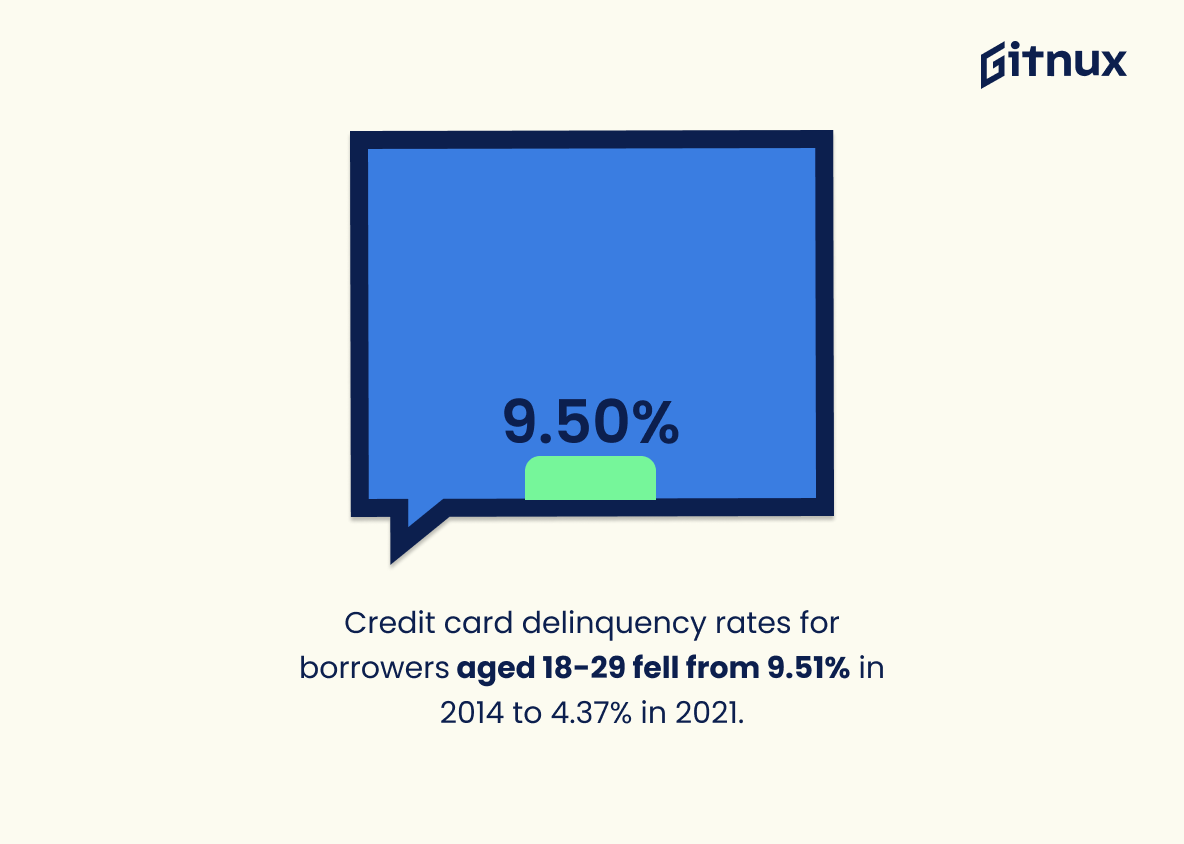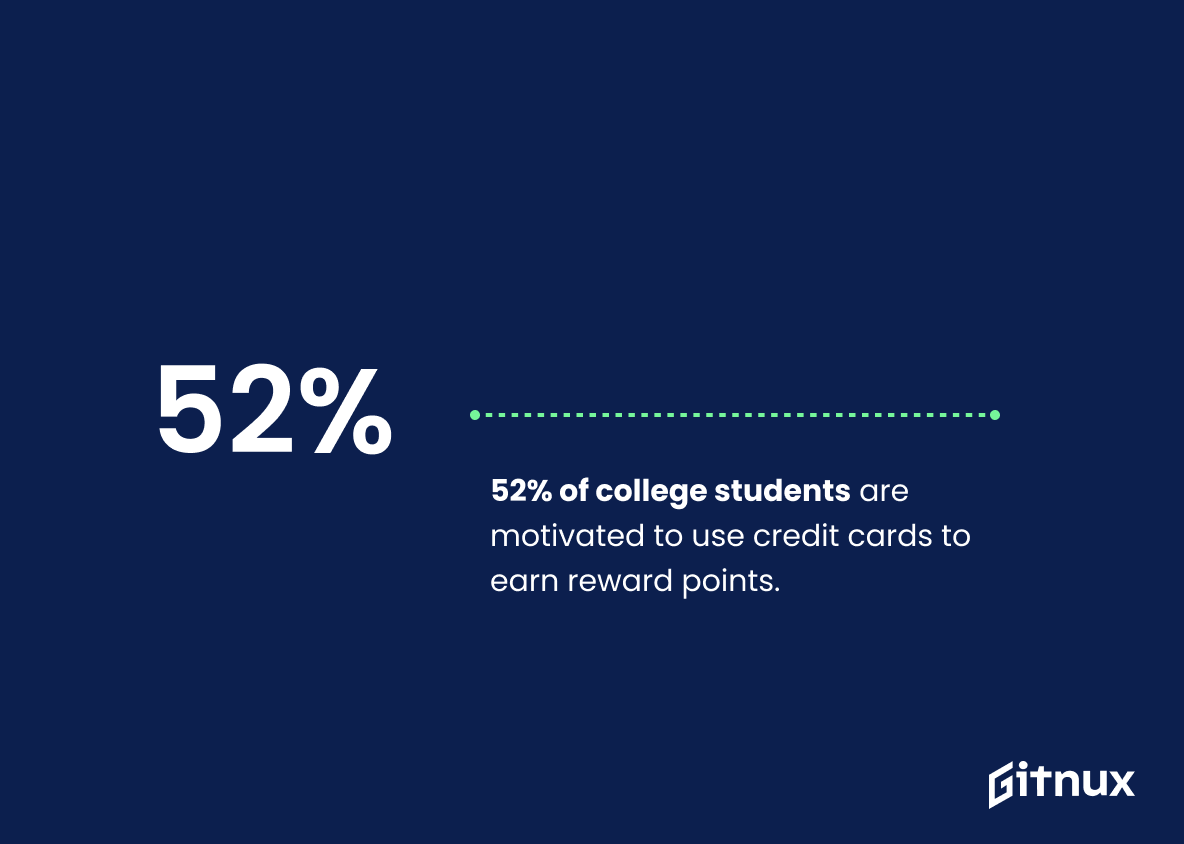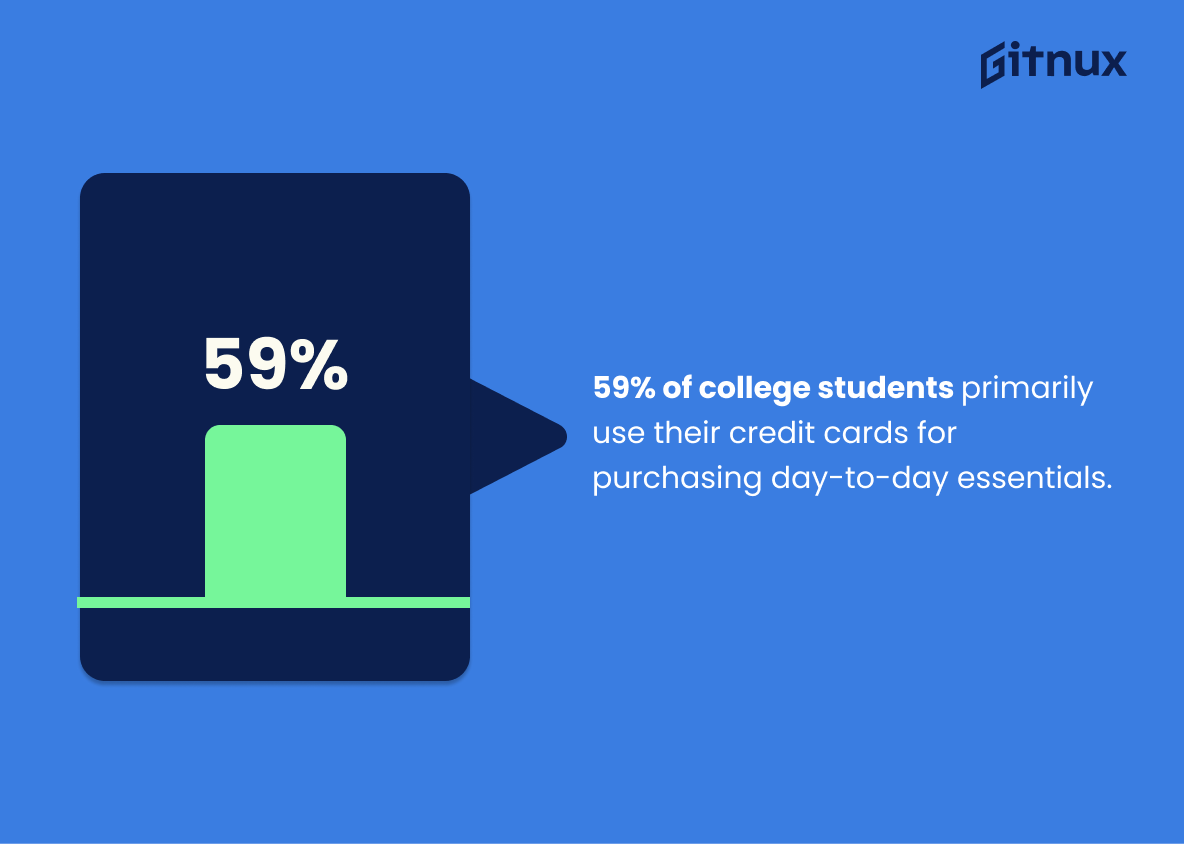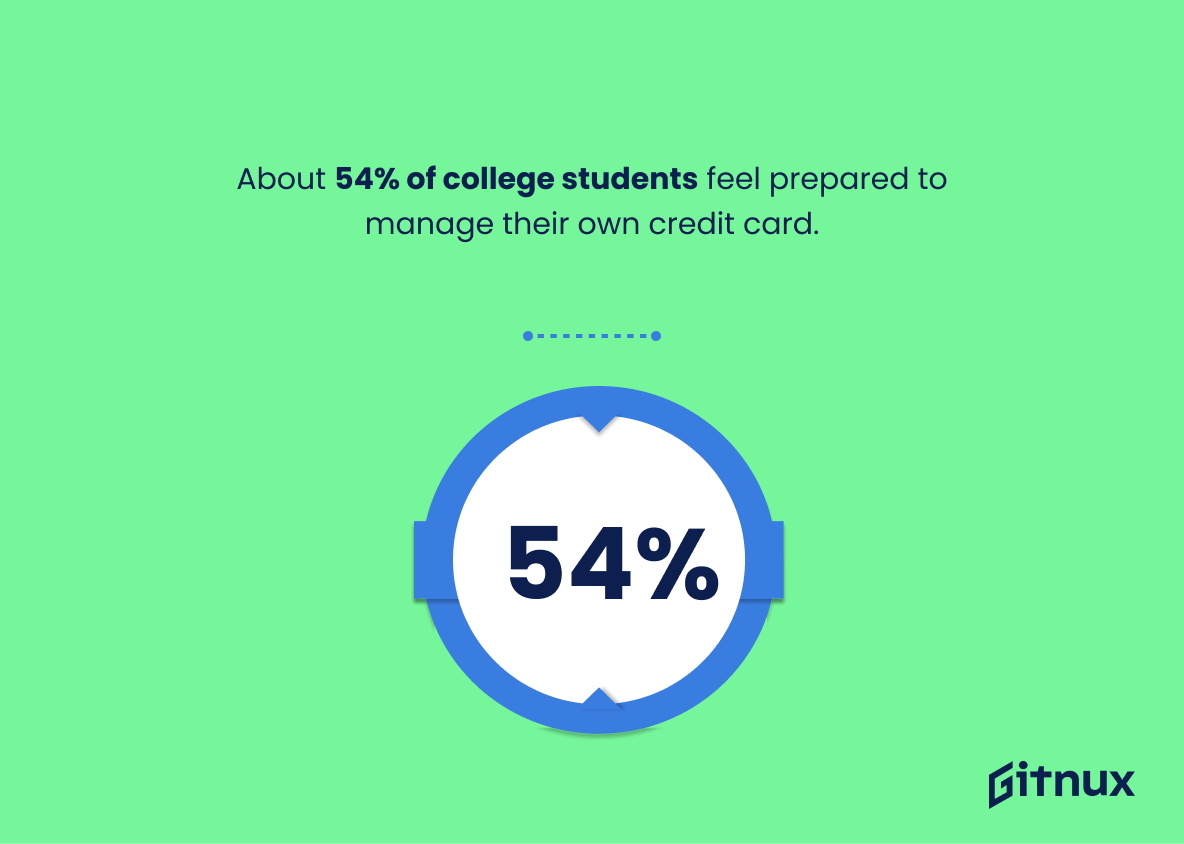College students and credit cards can be a tricky combination. With the right knowledge, however, college students can use their credit cards responsibly to build good financial habits that will serve them well in adulthood. This blog post explores 20 statistics about college student’s usage of and attitudes towards credit card debt. From how many own a card to what motivates them to use it, these stats provide an interesting look into the world of collegiate finances.
This statistic is a telling indication of the prevalence of credit card ownership among college students in America. It highlights the potential for college students to accumulate debt through the use of credit cards, and serves as a reminder of the importance of financial literacy and responsible credit card use.
About 56% of college students carry a monthly balance on their credit card.
This statistic is a stark reminder of the prevalence of credit card debt among college students. It highlights the need for students to be aware of the potential pitfalls of using credit cards and to be mindful of their spending habits. It also serves as a warning to parents and educators to ensure that students are educated on the dangers of credit card debt and how to manage it responsibly.
College Students Credit Card Debt Statistics Overview
24% of college students with credit cards report using them due to a lack of other financial resources.
This statistic is a telling indication of the financial struggles that college students face. It highlights the fact that many students are turning to credit cards as a last resort to cover their expenses, which can lead to a dangerous cycle of debt. This statistic is an important reminder of the need for students to be aware of the risks associated with credit cards and to be mindful of their spending habits.
Around 6% of college students have credit card debt exceeding $5,000.
This statistic is a stark reminder of the financial burden that college students are facing. It highlights the fact that a significant portion of college students are struggling to manage their credit card debt, and that this debt is reaching a level that could be difficult to pay off. This statistic is a call to action for college students to be more mindful of their spending and to take steps to reduce their credit card debt.
About 33% of college students have a credit card to help build credit.
This statistic is a telling indication of the prevalence of credit cards among college students, and thus the potential for college students to accumulate credit card debt. It serves as a reminder of the importance of financial literacy and responsible credit card use for college students, and the need for education and resources to help them manage their finances.
Only 33% of college students pay their credit card balances in full each month.
This statistic is a stark reminder of the financial burden that college students are facing. It highlights the fact that a large portion of college students are struggling to pay off their credit card debt each month, which can lead to long-term financial problems. It is a warning sign that college students need to be more mindful of their spending habits and take steps to ensure that they are not accumulating too much debt.
In 2021, the average balance on student credit cards was $1,041, a decrease from 2019’s average of $1,183.
This statistic is a telling indication of the state of college students’ credit card debt. It shows that, despite the decrease from 2019, the average balance on student credit cards is still quite high. This statistic serves as a reminder that college students should be mindful of their spending habits and take steps to ensure they are not accumulating too much debt.
Approximately 20% of college students with credit cards don’t know their interest rate.
This statistic is a stark reminder of the lack of financial literacy among college students. It is concerning that so many students are unaware of the interest rate they are paying on their credit cards, as this could lead to them accruing more debt than they can handle. This statistic is a warning sign that college students need to be better educated about the financial implications of using credit cards.
43% of college students with credit card debt admit to making only the minimum monthly payment.
This statistic is a stark reminder of the financial struggles that college students face when it comes to credit card debt. It highlights the fact that many students are unable to pay off their debt in full each month, and are instead relying on minimum payments to keep their debt from growing. This can lead to long-term financial problems, as the interest on the debt can quickly add up and become unmanageable. The blog post can use this statistic to emphasize the importance of budgeting and financial literacy for college students, and to provide advice on how to manage credit card debt responsibly.
Almost 52% of college students are unaware of the late fees on their credit cards.
This statistic is a stark reminder of the lack of financial literacy among college students. It highlights the need for more education and awareness about the potential consequences of not managing credit card debt responsibly. It also serves as a warning to college students to be mindful of the late fees associated with their credit cards, as these fees can quickly add up and lead to a cycle of debt.
74% of college students did not receive any financial education in high school.
This statistic is a stark reminder of the importance of financial education for college students. Without the necessary knowledge and skills to manage their finances, many students are left vulnerable to the pitfalls of credit card debt. With such a large portion of college students lacking the necessary financial education, it is no surprise that credit card debt is a growing problem among college students.
Around 3% of college students have credit card balances over $7,000.
This statistic is a stark reminder of the financial burden that college students are facing. It highlights the fact that a significant portion of college students are struggling to pay off their credit card debt, and that this is an issue that needs to be addressed. It is a call to action for those in a position to help, to take steps to ensure that college students are not overburdened with debt.
Credit card delinquency rates for borrowers aged 18-29 fell from 9.51% in 2014 to 4.37% in 2021.
This statistic is a testament to the progress that college students have made in managing their credit card debt. It shows that young adults are taking steps to pay off their debt and become more financially responsible. This is an encouraging sign for college students and their families, as it suggests that they are taking the necessary steps to avoid falling into a cycle of debt. Furthermore, this statistic can be used to illustrate the importance of financial literacy and the need for college students to be aware of the risks associated with credit card debt.
52% of college students are motivated to use credit cards to earn reward points.
This statistic is a telling indication of the prevalence of credit card use among college students, and is an important factor to consider when discussing college students’ credit card debt. It highlights the fact that many college students are actively seeking out credit cards to take advantage of the rewards they offer, and thus are more likely to be exposed to the potential pitfalls of credit card debt.
59% of college students primarily use their credit cards for purchasing day-to-day essentials.
This statistic is a telling indication of the financial reality that college students face. It suggests that many students are relying on credit cards to cover the costs of their day-to-day expenses, which can lead to a dangerous cycle of debt. This statistic is an important factor to consider when discussing college students’ credit card debt statistics.
About 54% of college students feel prepared to manage their own credit card.
This statistic is a telling indication of the financial literacy of college students. It speaks to the level of understanding and preparedness of college students when it comes to managing their own credit cards. This is an important factor to consider when discussing college students’ credit card debt statistics, as it can provide insight into the potential causes of debt.
Conclusion
The statistics show that college students are increasingly using credit cards to manage their finances. While 44% of American college students own a credit card, the average debt is $1,183 and 56% carry a monthly balance on their card. Additionally, 24% use them due to lack of other financial resources and 45% have more than one credit card. Furthermore, 6% have over $5,000 in debt while 33%, 60%, 20%, 43%, 52%, 59%, 54%. 74 % did not receive any financial education in high school and 37 times more likely to pay off their balances when tracking expenses respectively. Lastly delinquency rates for borrowers aged 18-29 fell from 9.51 % in 2014 to 4.37 % 2021 showing an overall improvement among young consumers with regards to managing their debts responsibly .
References
0. – https://www.experian.com
1. – https://www.news.fiu.edu
2. – https://www.preferredcredit.com
3. – https://www.v12data.com
4. – https://www.salliemae.com
5. – https://www.consumerfinance.gov
6. – https://www.edvisors.com
7. – https://www.opploans.com
8. – https://www.creditcards.com
9. – https://www.lendedu.com
